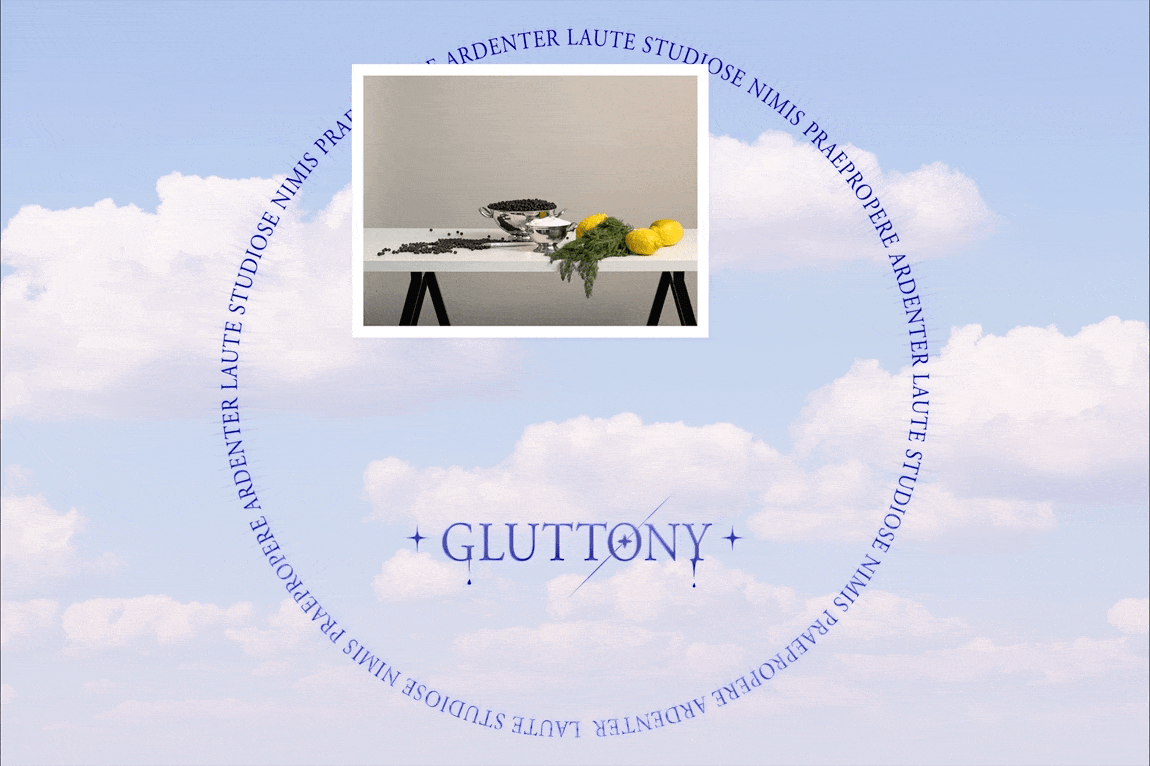SIN IS A SIN IS A SIN? FIVE KINDS OF GLUTTONY
Come to the dinner gong
The table is laden high
Fat bellies and hungry little ones
Tuck your napkins in
Take your share
Some get the gravy
And some get the gristle
Some get the marrow bone
And some get nothing
Though there's plenty to spare— Joni Mitchell, Banquet
Imagine a world in which no one is hungry: it’s very possible, if we were to divide things equally. But that is — increasingly so — not the world we live in, and that is worth fighting against. Many cultures and religions have long condemned character flaws like greed and gluttony for these reasons: they add to inequality and burden our natural resources excessively. Ultimately, they’re wasteful. But one religion came to define these sins a little differently. In Christianity, gluttony, like lust and greed, is a sin of desire — and a deadly one at that. It is the desire, or rather the giving in to the desire, that is sinful, because it distracts from a life under and in service of God. This means that in Christianity, for a long time it was not just gross indulgence which was frowned upon, but also connoisseurship. The careful consideration of food that had long been prominent in Islamic and Chinese traditions, for example, was dismissed entirely in medieval Christian tradition. Early on, Catholic thinkers began to draw distinctions, attempting to break down the sin and give gradients of bad, badder, baddest.
Pope Gregory I (540-604 A.D.) was the first to create five subcategories of gluttony, illustrating them with different passages from the Bible. Thomas Aquinas reiterated these ideas in his magnum opus, the Summa Theologica, and described each with a Latin adverb. Two aspects are to be considered, namely “the food we eat, and the eating thereof”. According to Aquinas, “the vice of gluttony tempts us in five ways”: three of these categories take into account the food itself, while the last two — the most sinful ones — concern its consumption.
What’s your pleasure? Simple, inexpensive foods are both better for your wallet and your chances in the afterlife. Laute is the first way in which to be guilty of gluttony, by eating food that is too luxurious or costly.
Humble makes pure? The best way to avoid committing the deadly sin of gluttony by way of studiose is to eat humble food, humbly prepared. No dainty julienne and brunoise, and no fancy sauces here.
How would Thomas Aquinas have liked the all-you-can-eat buffet, you ask? Not a whole lot, presumably. The third category of gluttony is nimis: eating too much.
Haste makes waste? There is a time and place for everything, including food. The fourth kind of gluttony is praepropere: eating too soon, or at an inappropriate time.
Eager beaver, bright-eyed and bushy-tailed at the dinner table? The sinnest of all sins. Ardenter, eating too eagerly with too much pleasure, is the last and worst way in which to commit the sin of gluttony. To quote Pope Gregory I: “It is not the food, but the desire that is at fault.”
Sources:
Paul Freedman: A New History of Cuisine. In: Food. The History of Taste. Edited by Paul Freedman. London, 2007.
Thomas Aquinas: Question 148. Gluttony. In: Summa Theologica. 1485.




















